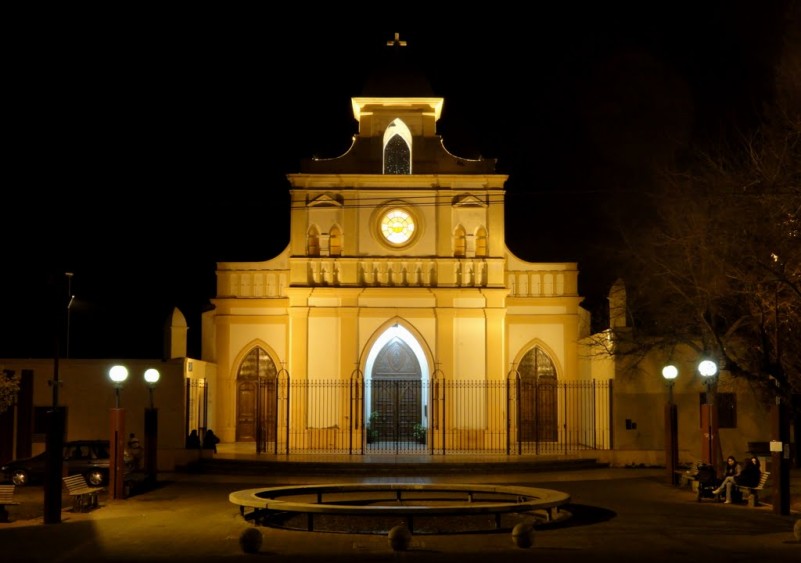7-New City
It is limited in the north by street Godoy Cruz, in the east by Sarmiento Street, in the south by the East Access Avenue, and in the west by Mitre Street.
With an area of 1.39 square kilometres and a population of 6886 inhabitants, its population density is 4954 inhabitants per square kilometre.
There are two schools, a police station, a hospital and a health centre.
Located in center of the department, within the urban area, it has residential characteristics; there are developed activities related to services and retail commerce. There is the Maternity and children’s hospital Humberto Notti, a hospital of high complexity, located on the street Bandera de los Andes 2400.
The main communication routes are the East Access Avenue, Bandera de los Andes, Godoy Cruz, and Mitre. The secondary communication routes are Sarmiento, Pringles, and Cornelio Saavedra.
The history of the district goes back to when the zone was also known as monsignor Verdaguer, in homage to the first Bishop of Cuyo.
Located in the west limit of the district, there is the Monument to the Cóndor, the biggest bird that it inhabits the Andes Mountain. The sculpture was inaugurated in 1958.
Guarded by this gigantic bird, it is the Park of the Virgin, where a monument in homage to the Virgin Maria made by the industrial designer Ramón Villarroel, in 1980, due to the Mariano Congress, which had the solemn presence of the Pope Juan Pablo II. In addition, since 1994 the park has a Tourist Information Centre, dependent of the Municipality of Guaymallén, which has the objective of offering important information to tourists and residents. It works from Monday through Friday from 7:30 am to 9:00 pm, Saturdays, Sundays and holidays from 9:00 am to 9:00 pm.
Another important monument, located on the East Access Avenue and Cañadita Alegre, is the small square Hilario Cuadros, in homage to one of the most important person of our folklore. Besides, in the place there is the park Juan Domingo Perón, an area that the neighbours usually use to spend the moments of leisure.
8-Villa Nueva
It is limited in the north by Belgrano Street, in the south by the streets Gutiérrez and Castro, in the east by the street La Purísima, and in the west by the streets Sarmiento and Estrada.
With an area of 6.70 square kilometres and a population of 31820 inhabitants, its population density is 4749 inhabitants per square kilometre.
There are fifteen schools, a police station, and a health centre.
The district of Villa Nueva has had a constant growth to the north of the East Access Avenue since the 40s. From the 70s on, the construction to the south of the East Access Avenue began to sprawl, the ‘Towers’ (a group of apartment buildings) from the Unimev neighbourhood appeared. In the Edificio Municipal district, there are the Libertad Art Museum, the Sagrada Familia Parish, and the parish of Josefinos Priests “La Purísima”.
The East Access Avenue divides the district in North Villa Nueva and South Villa Nueva; it is the National Route 7. This avenue constitutes the entrance to the metropolitan area, and comprises the Bio oceanic Corridor. The main communication roads are Godoy Cruz, Bandera de los Andes, Adolfo Calle, Sarmiento, Avellaneda, and Libertad. The secondary communication roads are Pedro del Castillo, and Urquiza.
History: May 24 1896 was the first date designated for the foundation of the head village of the Buena Nueva, which was postponed due to the bad weather, to the May 31. At the crack of dawn that day the Band of the Police woke the inhabitants of the village up. In centre of the Plaza de la Constitution, there was a thirty-six square metre platform, adorned in its front with the shields of Mendoza, Buenos Aires, Santiago del Estero and La Rioja.






